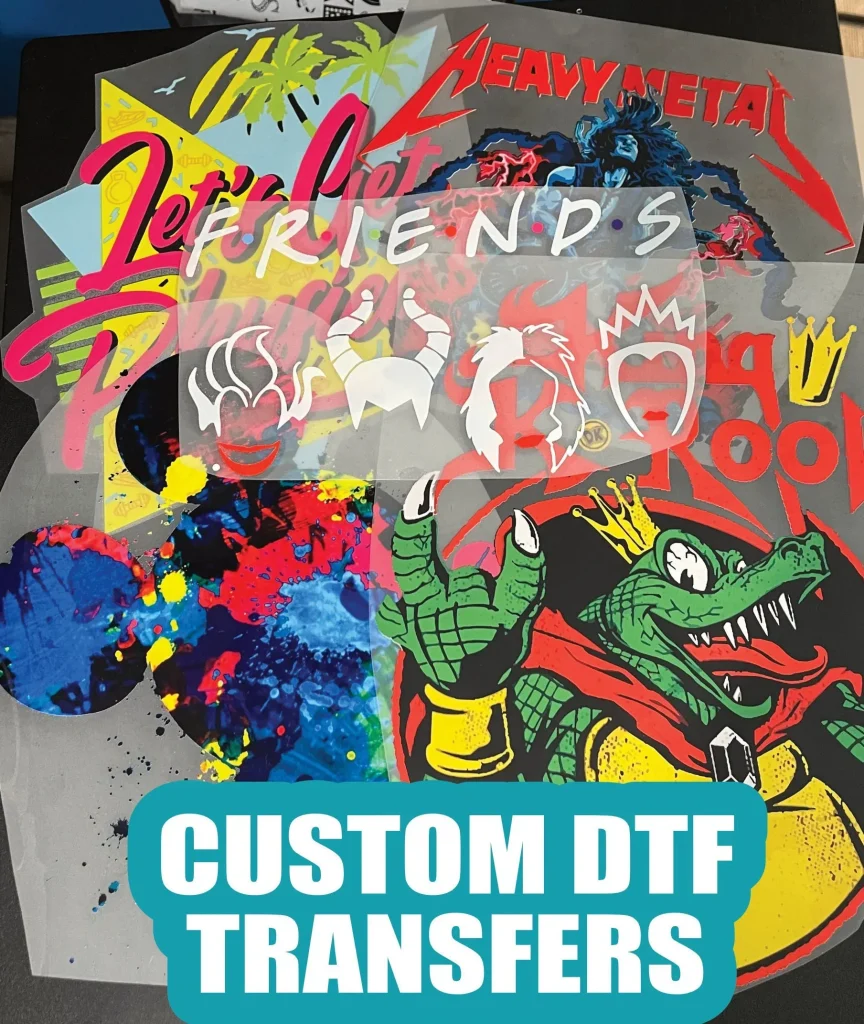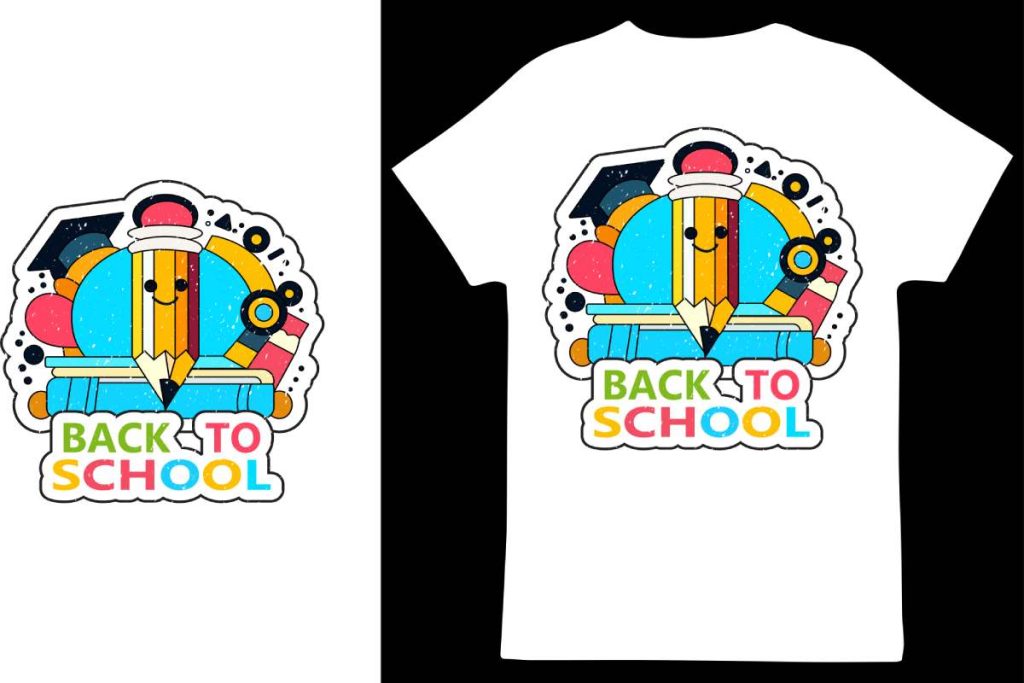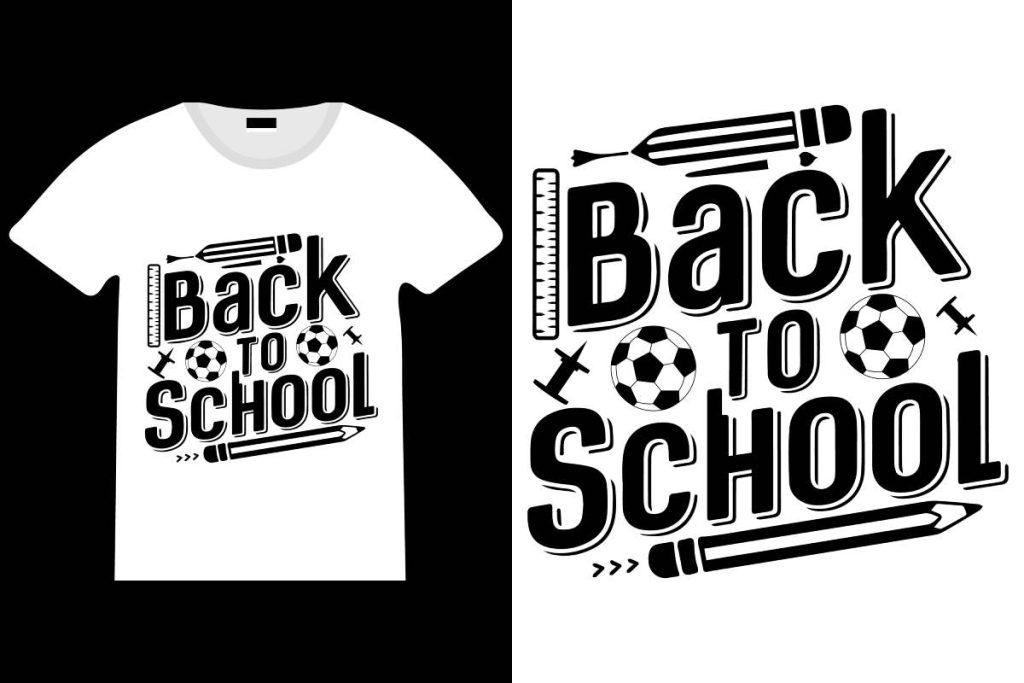In the vibrant realm of fabric printing, DTF transfers, or Direct-to-Film transfers, are quickly becoming a go-to choice for many creators. This cutting-edge technique enables artists to produce stunningly detailed images that are easily applied to various fabrics with exceptional durability. As we delve into the world of DTF printing techniques, you’ll discover how to use DTF transfers effectively, unlocking a new level of creativity in your projects. From selecting the perfect materials to mastering the application process, our comprehensive guide will provide you with all the DTF transfer tips you need to succeed. Join us as we explore the endless possibilities that DTF transfers offer for artists and designers striving to enhance their craftsmanship.
Direct-to-Film transfers, often referred to simply as DTF printing, have revolutionized the way artists approach garment customization. This innovative method involves printing a design onto a special film that can be transferred seamlessly onto a variety of materials. Fabric enthusiasts appreciate DTF methods for their ability to produce vibrant colors and intricate designs that stand the test of time. Whether you’re a seasoned pro or a newcomer looking for how to apply DTF transfers effectively, understanding the nuances of this technique is vital. In this guide, we will explore the versatility of DTF applications and provide practical tips to help you achieve the best results.
What Are DTF Transfers?
Direct-to-Film (DTF) transfers are a cutting-edge printing technology that has transformed the fabric printing arena. This method utilizes a specialized film upon which an image is printed. Unlike traditional techniques that apply ink directly onto fabric, DTF printing allows for a smooth transfer of vivid colors and intricate designs. The process involves printing the artwork on the film, followed by applying an adhesive powder before heat pressing it onto the fabric, ensuring an enduring bond that enhances the overall aesthetic of the garment.
The popularity of DTF transfers can be attributed to their versatility. DTF printing techniques can accommodate various fabrics, including cotton, polyester, and blends, making it ideal for custom apparel, promotional items, and personal projects alike. Furthermore, the ability to produce detailed graphics at a lower investment compared to other digital printing methods has made DTF a go-to choice for many graphic designers and small business owners looking to maximize their creativity.
Essential Materials for DTF Transfers
Choosing the right materials is critical when embarking on a DTF printing project. The quality of the DTF film and ink can significantly impact the durability and vibrancy of the final design. High-quality DTF films are specifically engineered to withstand repeated washes without fading, thus ensuring that your creative work lasts over time. Brands like iColor and M2 have garnered positive reviews for their reliability and compatibility with a diverse range of fabrics.
Additionally, using the right adhesive powder is equally crucial in achieving the best results with DTF transfers. This powder should ideally melt uniformly when heat-pressed, allowing for even adherence across the entire design. By prioritizing the selection of high-grade materials, you are not only setting the groundwork for magnificent output but also investing in a sustainable creative process that yields outstanding results.
Preparing Your Artwork for DTF Transfers
The art of preparing your artwork plays a pivotal role in the effectiveness of DTF transfers. Utilizing vector graphics is highly recommended, as they allow for scalable designs that retain quality without pixelation. High-resolution images are crucial, especially when dealing with complex graphics or multi-color prints. Techniques such as color separation can significantly enhance clarity, ensuring that each hue pops and each detail is preserved, enabling a pristine transfer.
In addition to graphics, consider the color palette you’re working with. DTF printing techniques can handle a wide array of colors, but it’s essential to choose hues that work harmoniously together. Testing your artwork on different media and adjusting contrasts can help refine your designs before the actual printing process. This strategic preparation fosters creativity by allowing you to visualize and iterate your concepts before committing them to fabric.
Optimizing Heat Press Settings for DTF Transfers
Getting the heat press settings right is critical for the successful application of DTF transfers. Each design may require a specific combination of temperature, pressure, and time to achieve the best results. As suggested by industry experts, it is often beneficial to run several test transfers on scrap fabric, allowing you to fine-tune these settings until you find the optimal setup for your unique materials and designs. This experimentation can lead to superior adherence, vibrant colors, and satisfying durability.
Moreover, keeping a detailed record of your heat press settings can serve as a valuable reference for future projects. As you gain more experience with DTF transfers, you’ll develop an intuitive understanding of how different materials respond to various settings. This detailed documentation not only expedites the process but also enhances your overall creative workflow, allowing for faster turnarounds on projects while maintaining high standards.
Creative Applications of DTF Transfers
The versatility of DTF transfers opens up an exciting realm of creative applications. From custom apparel to promotional items, the possibilities are nearly limitless. You can experiment with different fabric types; for instance, while DTF transfers work wonderfully on cotton, they also produce excellent results on polyester blends and even leather. This adaptability empowers designers to create a wide range of products, from trendy fashion pieces to unique home decor items.
Additionally, DTF printing allows for layering transfers, which can create multi-dimensional effects that elevate your designs beyond the ordinary. By experimenting with textures and combining various colors, you can achieve striking visual impacts that resonate with your target audience. Embracing the creative potential of DTF transfers can not only enhance your portfolio but also distinguish your work in a competitive marketplace.
Best Practices for Post-Transfer Care
Once you’ve successfully applied your DTF transfers, proper post-transfer care is essential to ensure longevity. Washing your garments inside out and opting for cold water is highly recommended to prevent fading and deterioration of the image. It’s also advisable to avoid harsh detergents and fabric softeners that could compromise the integrity of the transfer. Following these guidelines will help maintain the vibrant colors and overall crispness of your designs.
Maintaining your DTF prints isn’t just about cleaning; it’s also about storage. Always ensure that printed items are stored in a cool, dry place to avoid any potential damage. By establishing a proper care regimen, you not only preserve the aesthetic quality of your creations but also demonstrate a commitment to craftsmanship that reflects positively on your brand or artistic identity.
Frequently Asked Questions
What are DTF transfers and how do they work?
DTF transfers, or Direct-to-Film transfers, are a printing technique where a design is printed onto a special film that is then heat-pressed onto fabric. This method creates vibrant and detailed images that can be applied to various materials, unlocking a range of creative possibilities for garment printing.
What are the best materials to use for DTF transfers?
For successful DTF transfers, using high-quality DTF films and inks is essential. Recommended brands like iColor and M2 offer reliable options that ensure your designs are durable and washable, helping to maximize the longevity and vibrancy of your transferred images.
How can I prepare artwork for DTF transfers effectively?
To prepare artwork for DTF transfers, utilize vector graphics for scalability and ensure high-resolution images for clarity. Techniques like color separation are critical for managing multi-color prints, which helps in achieving professional results and enhances the overall quality of your creative outputs.
What heat press settings should I use for DTF transfers?
Optimal heat press settings for DTF transfers can vary by material, so it’s crucial to experiment with different temperature, pressure, and time combinations. Fine-tuning these parameters allows for better adhesion and enhances the appearance of your designs, ensuring a standout final product.
What are some creative applications of DTF transfers?
DTF transfers are versatile and can be used on various fabrics, including cotton, polyester blends, and leather. This versatility allows for applications ranging from custom apparel to unique home decor items. Layering transfers can also create interesting textures and effects that elevate your designs.
How should I care for garments with DTF transfers?
To maintain the quality of garments with DTF transfers, wash them inside out in cold water and avoid harsh detergents. Following care recommendations helps preserve the vibrant colors and longevity of your prints, ensuring that your creative efforts last longer.
| Key Point | Description |
|---|---|
| Introduction | DTF transfers are a modern technique allowing vibrant images to be applied to fabric, greatly enhancing creativity for makers. |
| Understanding DTF Transfer | DTF printing involves transferring designs from a special film to fabric, providing detailed graphics and color variety. |
| Choosing the Right Materials | High-quality DTF films and inks ensure durability; brands like iColor and M2 are recommended. |
| Artwork Preparation | Use vector graphics and high-resolution images for clarity in designs, crucial for achieving professional-looking transfers. |
| Heat Press Settings | Correct temperature, pressure, and timing through experimentation optimize transfer adhesion. |
| Creative Applications | DTF transfers can be used on various fabrics, including cotton, polyester, and leather, expanding creative options. |
| Post-Transfer Care | Washing garments inside out in cold water is advised to maintain print quality and longevity. |
| Connecting with the Community | Engaging with online forums and groups fosters collaboration, idea exchange, and problem-solving help. |
Summary
DTF transfers provide a remarkable pathway for artists and designers to explore their creative potential in fabric printing. By understanding the intricate steps needed, from selecting the right materials to mastering heat press techniques, creators are fully equipped to produce striking designs that stand out. Furthermore, engaging with a community through social forums amplifies inspiration and collaboration, enriching personal practices. With the right approach, DTF transfers can lead to endless creative possibilities and a vibrant expression of art on fabric.



